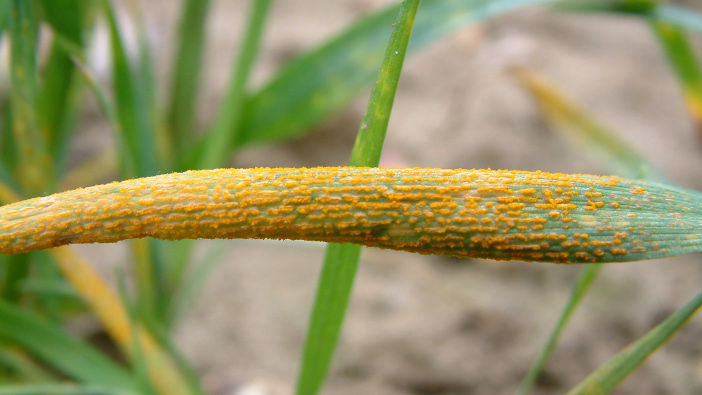Arable farmers with late planted or stunted winter wheat crops may need to adjust aspects of their crop management, David King, head of technical at Syngenta UK explains.
As well as finding ways to bolster growth and managing inputs to match the yield potential, disease management should also be a priority, with backwards crops being more vulnerable to yellow rust.
“Ordinarily, Septoria tritici is the main disease that’s top-of-mind in winter wheat,” he said. “While this will still need protecting against, there’s less time for it to build up over winter in late-drilled crops. Conversely, backward crops are at heightened risk from yellow rust, due to their smaller leaf area. Left untreated, yellow rust can cut yield by as much as half – which is particularly unwelcome if yield potential is already lower due to backward growth.”
While yellow rust can be reduced by frost, Mr King added that these need to be harsher than many realise – minus 5-6 degrees continuously for five days – and the disease can reappear quickly in favourable conditions.
“To stay on the front foot against yellow rust, consider a suitable triazole fungicide at the March T0 spray timing as crops come out of winter. Then, for the pivotal T1 timing in April, make sure the fungicide used has a track record of strong yellow rust activity and isn’t only focused on Septoria tritici. Check the independent AHDB fungicide dose-response curves for information; you’ll see Solatenol, the SDHI fungicide in Elatus Era, has given outstanding yellow rust control and yields in a yellow rust situation over multiple years.
“Elatus Era also provides long-lasting protection against Septoria tritici and is cost-effective, which are also important properties for a foliar T1 fungicide – the aim of which is to begin protecting the top three yield-building leaves. Together, these leaves contribute about 75% of the final winter wheat yield. If yield potential has been diminished at all by late planting or delayed growth, ensuring as much of that 75% yield contribution is retained as possible becomes even more important.”
He also urged regular inspection through winter and into spring to spot early signs of yellow rust and other diseases and to take into account variety resistance. “There are plenty of varieties with low resistance ratings against yellow rust,” he said. “Prevention is better than cure.”
For more information go to www.syngenta.com





